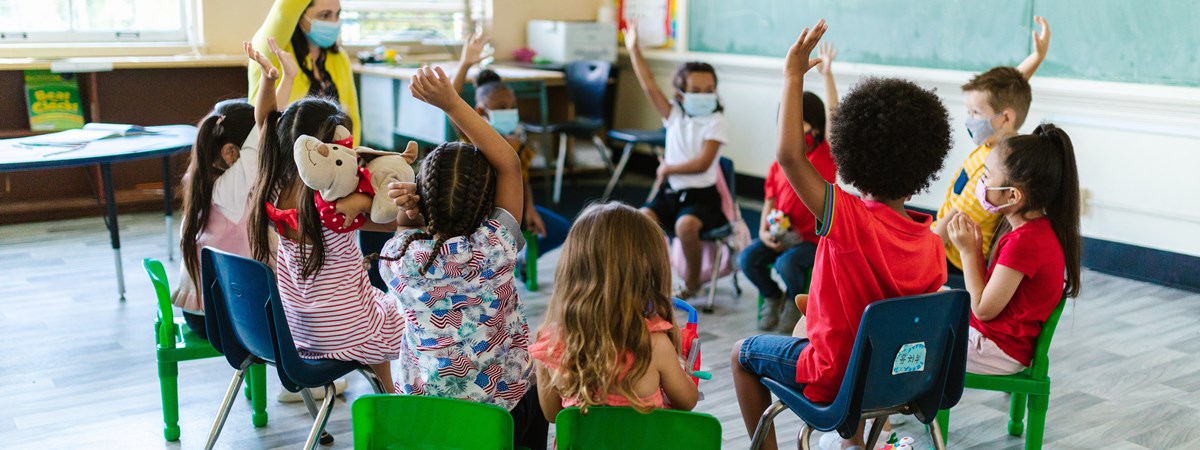In part three of this article series Richard Palmer, Director of Chameleon PDE reflects on the place of LGBTQ+ in the primary curriculum
Anxieties about LGBTQ+ education can become charged when the focus is on the primary phase. As with their secondary colleagues, the vast majority of primary school staff take a common-sense approach and include LGBTQ+ when and where it’s appropriate.
In the UK, government statutory guidance enables schools to include LGBTQ+ content if they consider it ‘age-appropriate’ to do so. This unequivocally gives primary schools permission to include LGBTQ+ content as long as it is well-considered and evidence-based on the needs of pupils.
However, many UK primary schools are fearful of backlash if they teach anything LGBTQ+, including the use of story books with LGBTQ+ characters. Much of this comes from myths and misperceptions that have been propagated in the press and on social media. These are untrue, or present a ‘twisted’ version of the facts in order to promote a specific agenda e.g., trans-denial.
So, what is ‘appropriate’ in primary?
Family diversity
The ‘nuclear family’ is common but by no means the norm in most Western countries. There could be children in class who have same-sex parents or relatives. The primary curriculum often includes lessons about families and why they are special. If we only present one view of a family to the children, this excludes some, especially those with same-sex parents. Teachers generally feel OK to include family diversity such as adoptive parents, or lone-parents, yet having 2 mums or 2 dads can feel more of a tricky issue. It’s just another form of diversity. If we don’t make these children feel included, it can damage their self-worth if they feel their family is not ‘normal’. Their peers will also learn this message too.
However, for some international schools even this type of teaching would not be possible due to regional legislation and customs. In this situation, schools have little choice.
What is being gay?
Children may know the word gay, and some may be using it as an insult. This is where it’s important to know the needs of your pupils. If there has been an outbreak of pejoratives in your classroom such as, ‘That drawing is gay’, ‘Those shoes are gay’, ‘Don’t be so gay’ etc., then this needs to be tackled.
Children should be taught that using any unkind word is hurtful. Primary schools that take an inclusive line bring in all sorts of words at this point. This includes any LGBTQ+ slurs they have heard the children using. This isn’t singling out some words over others - it’s well-judged inclusive education.
So, what if the children ask what gay means? We don’t need to go into any detail. Being gay can be explained to children in simple terms. It’s when a man and a man, or a woman and a woman love each other in a romantic way. This isn’t discussing anything sexual. Yet again, if local laws restrict this type of discussion, teachers will simply need to defer the question and inform the children this is something they will learn about when they are older.
What about trans?
Trans-inclusion provokes strong arguments when it comes to primary and secondary education. At primary level is it a necessary part of the curriculum? That very much depends on your cohort of pupils. If they have a trans-classmate then the pupils may need (with permission from the trans-child and their carers) some education to empathise with, and accept this pupil’s change in gender.
Universal provision about trans in the primary classroom may not always be developmentally appropriate for all children in all settings. Primary schools often teach children about gender stereotyping and why this is unfair; add trans into the mix and there is potential for some children to become confused unless this is taught with sensitivity and clarity. If your pupils are not aware of trans or using transphobic language, then do you need to specifically teach about it?
Teacher and school values
LGBTQ+ education can conflict with the values of an individual or school. It is better to have an open discussion with staff about their feelings towards teaching LGBTQ+ content. If your school is permitted to do so, and it’s part of your curriculum then teachers may need to ‘park’ their personal values to one side in order to fulfil their duties. Where personal values cannot be ‘parked’ then it may be more appropriate for a different teacher to deliver these aspects of the curriculum.
Each school will also have its own set of values. If a sub-section of these is to prepare pupils for modern life, then perhaps some LGBTQ+ curriculum content is appropriate in primary classrooms. Importantly we should always try (where legally permitted to do so) to make children who have same-sex parents, or who are trans, feel as equally valued as everyone else.
Reflective questions
1. Are you concerned about any potential backlash if you include some LGBTQ+ content in your primary curriculum? Can this be overcome? Are there legalities that prevent you from teaching it?
2. How do your staff REALLY feel about teaching LGBTQ+ content? Can they be supported?
3. Do you have children from same-sex families, or pupils who are trans? How are these pupils being included (if legalities allow)?
- - - - - - - -
** Not registered yet? Create your free profile here and add a response below **
To share your story, thoughts or ideas with the ISN community, please send your article draft directly to our editorial team here, or email us at [email protected]


